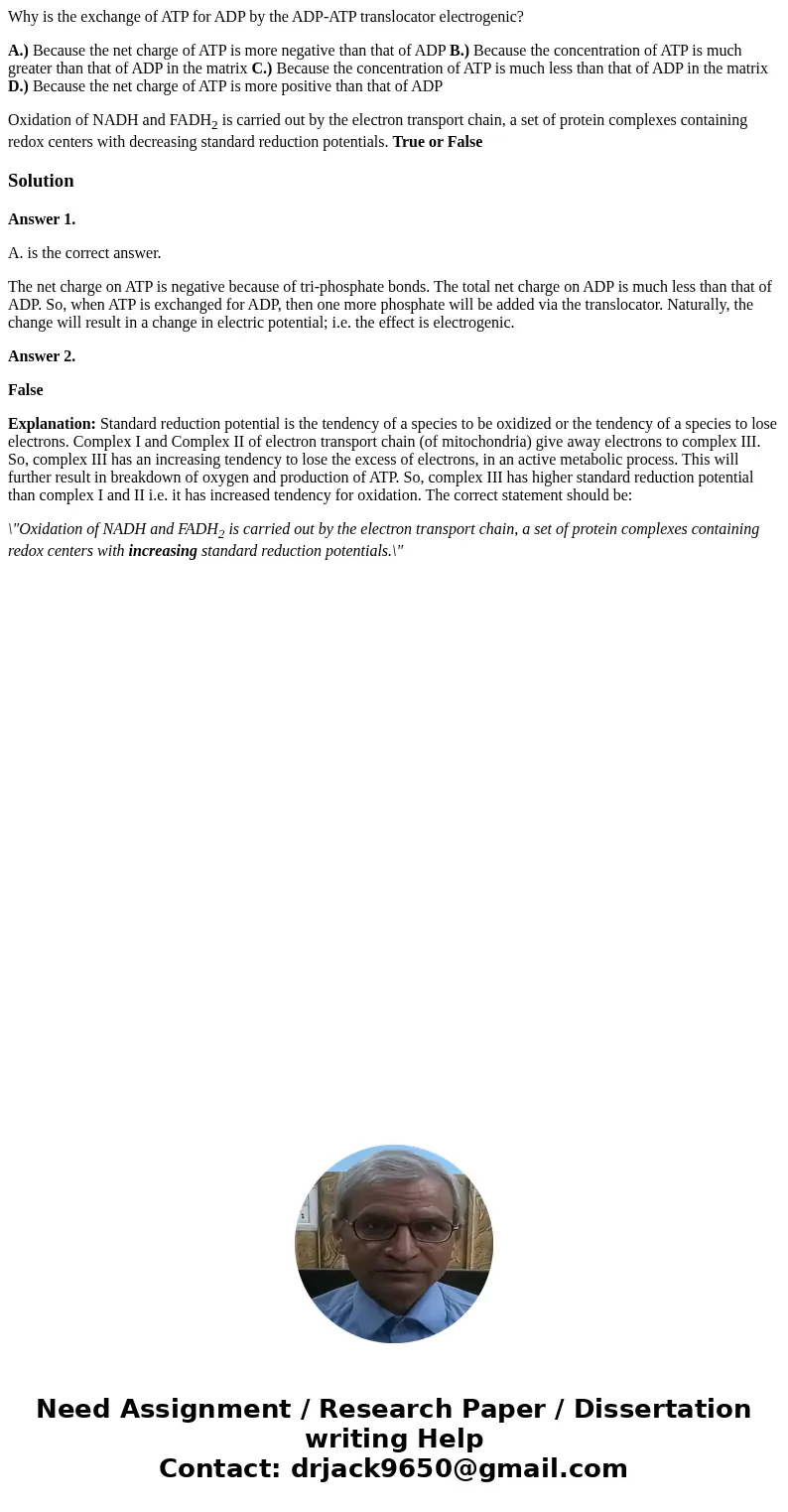Why is the exchange of ATP for ADP by the ADPATP translocato
Why is the exchange of ATP for ADP by the ADP-ATP translocator electrogenic?
A.) Because the net charge of ATP is more negative than that of ADP B.) Because the concentration of ATP is much greater than that of ADP in the matrix C.) Because the concentration of ATP is much less than that of ADP in the matrix D.) Because the net charge of ATP is more positive than that of ADP
Oxidation of NADH and FADH2 is carried out by the electron transport chain, a set of protein complexes containing redox centers with decreasing standard reduction potentials. True or False
Solution
Answer 1.
A. is the correct answer.
The net charge on ATP is negative because of tri-phosphate bonds. The total net charge on ADP is much less than that of ADP. So, when ATP is exchanged for ADP, then one more phosphate will be added via the translocator. Naturally, the change will result in a change in electric potential; i.e. the effect is electrogenic.
Answer 2.
False
Explanation: Standard reduction potential is the tendency of a species to be oxidized or the tendency of a species to lose electrons. Complex I and Complex II of electron transport chain (of mitochondria) give away electrons to complex III. So, complex III has an increasing tendency to lose the excess of electrons, in an active metabolic process. This will further result in breakdown of oxygen and production of ATP. So, complex III has higher standard reduction potential than complex I and II i.e. it has increased tendency for oxidation. The correct statement should be:
\"Oxidation of NADH and FADH2 is carried out by the electron transport chain, a set of protein complexes containing redox centers with increasing standard reduction potentials.\"

 Homework Sourse
Homework Sourse